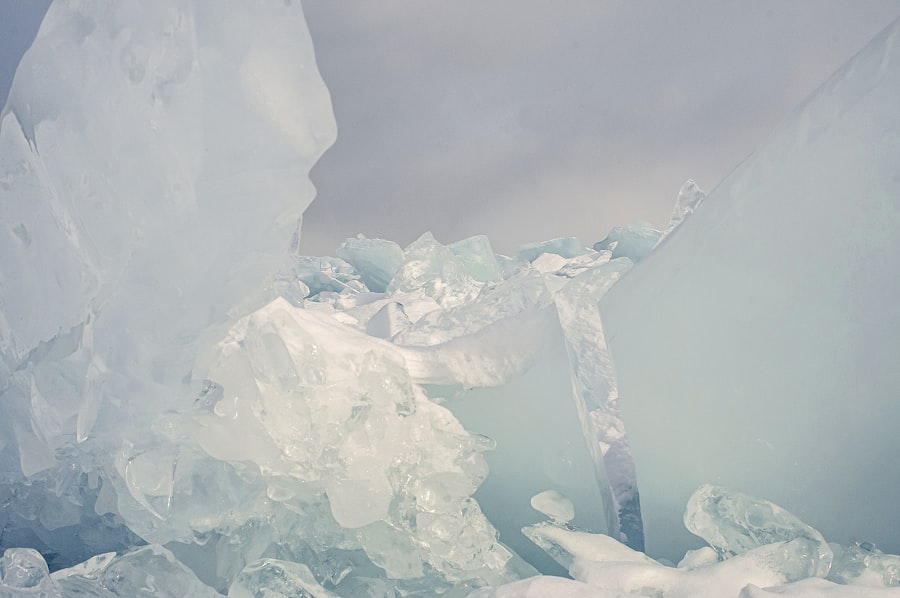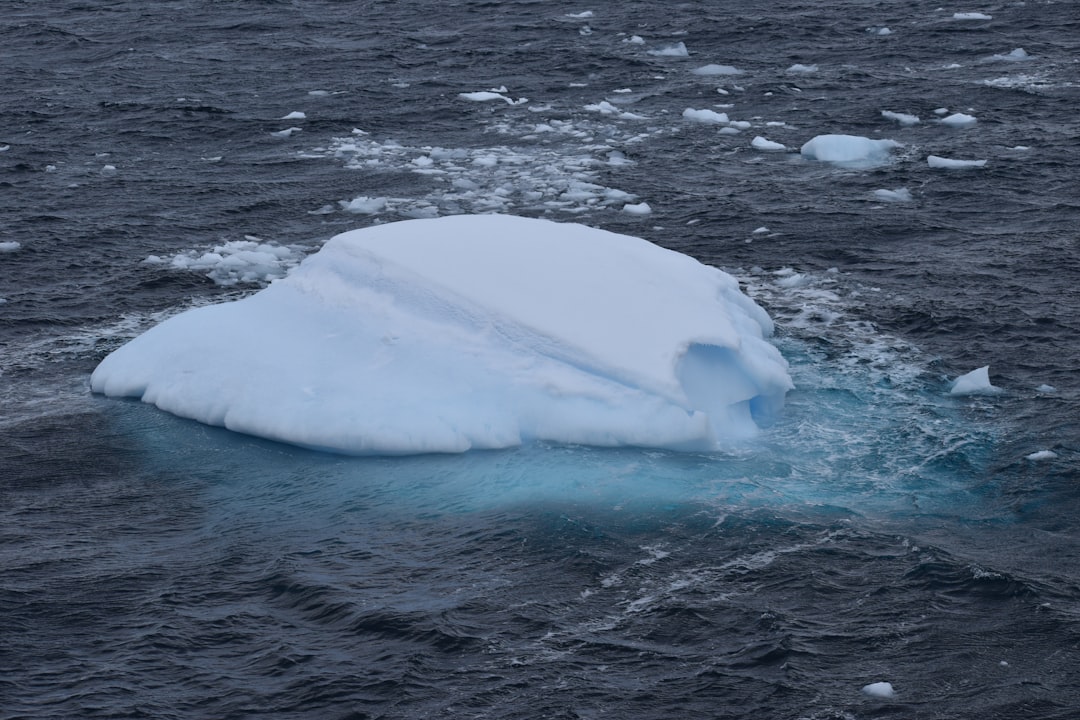The Drake Passage, a body of water that separates South America from Antarctica, is renowned for its tumultuous seas and unpredictable weather. Stretching approximately 600 miles, this passage is often considered one of the most challenging maritime routes in the world. It serves as a critical junction for ocean currents, particularly the Antarctic Circumpolar Current, which flows unimpeded around the continent of Antarctica.
This unique geographical feature contributes to the passage’s notorious reputation, as the confluence of these currents can create formidable waves and strong winds, making navigation a daunting task. For those who venture into the Drake Passage, understanding its characteristics is essential. The waters are often described as a battleground of nature, where the cold waters of the Southern Ocean collide with the warmer waters of the Atlantic.
This clash results in rapidly changing weather conditions, which can shift from calm to stormy in a matter of hours. The passage is not only a physical barrier but also a psychological one for many travelers, as they prepare to face the raw power of nature. Knowledge of the passage’s history, its role in maritime exploration, and its ecological significance can enhance the experience for those who dare to cross it.
Key Takeaways
- The Drake Passage is a body of water between South America’s Cape Horn and the South Shetland Islands of Antarctica, known for its rough seas and challenging sailing conditions.
- When planning for the journey through the Drake Passage, it is important to consider the time of year, weather conditions, and the purpose of the trip, whether it be for scientific research or tourism.
- Choosing the right vessel for the journey is crucial, as it should be sturdy, well-equipped, and have an experienced crew familiar with navigating the rough seas of the Drake Passage.
- Packing essentials for the passage should include warm and waterproof clothing, sea sickness medication, and any necessary equipment for wildlife spotting and extreme weather conditions.
- Navigating the rough seas of the Drake Passage requires careful planning, experienced crew, and adherence to safety precautions to ensure a safe and enjoyable journey.
Planning for the Journey
Planning a journey through the Drake Passage requires careful consideration and thorough preparation. Travelers must first decide on the best time to embark on their adventure. The summer months in the Southern Hemisphere, from November to March, are generally regarded as the ideal window for crossing.
During this period, the weather tends to be milder, and sea conditions are often more favorable. However, even during these months, one must remain vigilant, as the Drake Passage is known for its sudden changes. In addition to timing, prospective travelers should also consider their itinerary and activities while crossing the passage.
Many choose to combine their journey with a visit to Antarctica, making it essential to plan for excursions such as wildlife watching or exploring ice formations. Researching various tour operators and their offerings can help travelers find a package that aligns with their interests and budget. Furthermore, understanding the logistics involved—such as travel insurance, necessary permits, and health precautions—can ensure a smoother experience when navigating this challenging route.
Choosing the Right Vessel

Selecting the appropriate vessel for traversing the Drake Passage is a critical decision that can significantly impact the overall experience. Various types of ships are available, ranging from large cruise liners to smaller expedition vessels. Each option comes with its own set of advantages and disadvantages.
Larger ships may offer more amenities and stability in rough seas, while smaller vessels can provide a more intimate experience and greater access to remote areas. When choosing a vessel, travelers should consider factors such as comfort level, onboard services, and crew expertise. Some ships are specifically designed for polar exploration and are equipped with ice-strengthened hulls to navigate icy waters safely.
Additionally, travelers should assess the ship’s capacity for handling adverse weather conditions, as well as its safety features. Ultimately, selecting the right vessel can enhance not only safety but also enjoyment during the journey through one of the world’s most formidable maritime environments.
Packing Essentials for the Passage
| Item | Quantity | Description |
|---|---|---|
| Clothing | 1 set | Lightweight and quick-drying |
| Sunscreen | 1 bottle | SPF 30 or higher |
| Water bottle | 1 | Reusable and durable |
| Hat | 1 | Wide-brimmed for sun protection |
| Sunglasses | 1 pair | Polarized for glare reduction |
Packing for a journey through the Drake Passage requires careful thought and consideration of various factors, including weather conditions and personal comfort. Travelers should prioritize layering clothing to adapt to fluctuating temperatures. A waterproof outer layer is essential to protect against wind and rain, while thermal layers will provide warmth during colder spells.
Accessories such as gloves, hats, and scarves should not be overlooked, as they can make a significant difference in comfort levels during outdoor excursions. In addition to clothing, travelers should also consider packing essential gear for activities planned during their journey. Binoculars for wildlife spotting, cameras for capturing breathtaking landscapes, and personal items such as medications or travel documents are crucial.
It is also wise to bring along seasickness remedies, as even seasoned travelers can be caught off guard by the unpredictable nature of the passage. By preparing adequately and packing wisely, travelers can ensure they are ready for whatever challenges may arise during their adventure.
Navigating the Rough Seas
Navigating through the rough seas of the Drake Passage is an experience that tests both skill and resilience. The passage is infamous for its high waves and strong winds that can reach up to 50 knots or more. As vessels traverse this stretch of water, they often encounter swells that can rise dramatically within short periods.
For many travelers, witnessing these powerful forces of nature can be both exhilarating and intimidating. Experienced crew members play a vital role in ensuring safe navigation through these challenging waters. They utilize advanced technology and their extensive knowledge of maritime conditions to chart a course that minimizes risks while maximizing safety.
For passengers aboard these vessels, it is essential to remain informed about safety protocols and to trust in the expertise of those at the helm.
Safety Precautions on the Journey

Safety precautions are paramount when embarking on a journey through the Drake Passage. Given its reputation for unpredictable weather and rough seas, travelers must be prepared for any eventuality. Before setting sail, it is crucial for passengers to familiarize themselves with safety protocols outlined by the crew.
This includes understanding emergency procedures, knowing where life jackets are stored, and participating in safety drills. Moreover, maintaining open communication with crew members throughout the journey is essential. Passengers should feel comfortable asking questions or expressing concerns regarding safety measures or weather conditions.
Additionally, it is advisable to stay informed about potential changes in itinerary due to weather-related challenges. By prioritizing safety and remaining vigilant throughout the journey, travelers can enjoy their experience while minimizing risks associated with navigating such treacherous waters.
Wildlife Spotting in the Passage
One of the most captivating aspects of crossing the Drake Passage is the opportunity for wildlife spotting. The waters are teeming with marine life, including various species of whales, seals, and seabirds that thrive in this unique ecosystem. Travelers may be fortunate enough to witness humpback whales breaching or orcas hunting in their natural habitat.
The sight of these majestic creatures against the backdrop of icy waters is an unforgettable experience that many adventurers cherish. Birdwatchers will also find delight in observing numerous seabird species that inhabit this region. Albatrosses glide gracefully above the waves while petrels dart across the surface in search of food.
The diversity of wildlife in the Drake Passage offers an enriching experience for those who appreciate nature’s wonders. Engaging knowledgeable guides who can provide insights into animal behavior and ecology enhances this experience further, allowing travelers to gain a deeper understanding of the delicate balance within this marine environment.
The Importance of Experienced Crew
The significance of having an experienced crew cannot be overstated when navigating through the Drake Passage. These professionals possess invaluable knowledge about maritime navigation, weather patterns, and safety protocols that are crucial for ensuring a successful journey. Their expertise allows them to make informed decisions regarding route adjustments based on real-time conditions, ultimately prioritizing passenger safety.
Moreover, an experienced crew enhances the overall travel experience by providing insights into local history and ecology. They often share fascinating stories about past explorers who braved these waters and offer educational commentary on wildlife sightings during crossings. This combination of safety and enrichment transforms what could be a daunting journey into an unforgettable adventure filled with learning opportunities.
Dealing with Sea Sickness
Sea sickness is a common concern for many travelers embarking on a journey through the Drake Passage. The unpredictable nature of these waters can lead to discomfort for even seasoned sailors. Understanding how to manage sea sickness is essential for ensuring an enjoyable experience during this challenging crossing.
Travelers are encouraged to take preventive measures before setting sail. Over-the-counter medications designed to alleviate motion sickness can be effective when taken prior to departure. Additionally, staying hydrated and consuming light meals can help mitigate symptoms once at sea.
For those who do experience discomfort during their journey, finding a stable spot on deck or focusing on the horizon can provide relief. By being proactive about sea sickness management, travelers can better enjoy their time spent navigating this remarkable passage.
Adapting to the Extreme Weather
Adapting to extreme weather conditions is an integral part of any journey through the Drake Passage.
Being prepared for such variability is crucial for maintaining comfort and safety throughout the voyage.
Travelers should equip themselves with appropriate clothing layers that allow them to adjust quickly to changing temperatures. Waterproof gear is essential not only for protection against rain but also against wind chill that can make even mild temperatures feel frigid at sea. Additionally, staying informed about weather forecasts provided by crew members can help passengers anticipate changes and adapt accordingly.
Embracing flexibility in plans while remaining prepared for sudden shifts in weather will enhance one’s overall experience during this extraordinary journey.
Making the Most of the Passage Experience
To truly make the most of a journey through the Drake Passage, travelers should embrace every moment spent in this awe-inspiring environment. Engaging fully with onboard activities—such as lectures on Antarctic ecology or photography workshops—can enrich one’s understanding of this unique region while fostering connections with fellow adventurers. Additionally, taking time to appreciate breathtaking views from various vantage points on deck allows travelers to soak in their surroundings fully.
Whether it’s capturing stunning photographs or simply enjoying quiet moments of reflection amidst nature’s grandeur, each experience contributes to lasting memories of crossing this remarkable passage. By approaching this adventure with an open mind and a spirit of curiosity, travelers can create an unforgettable narrative that extends far beyond their time spent at sea.
The Drake Passage, known for its turbulent waters, has recently been the subject of discussions regarding its potential to freeze over due to changing climate conditions. This phenomenon could have significant implications for global ocean currents and marine life. For more insights into the geographical and environmental aspects of such phenomena, you can explore a related article on MyGeoQuest, which delves into various geographical wonders and their impacts on our planet.
WATCH NOW! Drake Passage: Earth’s Deadliest Waters Revealed
FAQs
What is the Drake Passage?
The Drake Passage is the body of water between the southern tip of South America and the northern tip of the Antarctic Peninsula. It is known for its rough seas and strong winds, making it one of the most challenging maritime routes in the world.
Is it common for the Drake Passage to freeze?
Yes, it is not uncommon for the Drake Passage to freeze during the winter months. The freezing of the passage can make navigation difficult and dangerous for ships and other vessels.
What causes the Drake Passage to freeze?
The freezing of the Drake Passage is primarily caused by the extremely cold temperatures in the region during the winter months. The combination of cold air and the presence of sea ice can lead to the formation of ice in the passage.
How does the freezing of the Drake Passage impact maritime travel?
The freezing of the Drake Passage can significantly impact maritime travel, as it can make navigation through the passage difficult and dangerous. Ships and other vessels may be forced to alter their routes or wait for the ice to thaw before attempting to pass through.
Are there any scientific implications of the Drake Passage freezing?
The freezing of the Drake Passage can have scientific implications, as it can impact the movement of ocean currents and the exchange of water between the Atlantic, Pacific, and Southern Oceans. This can in turn affect global climate patterns and the distribution of marine life.
